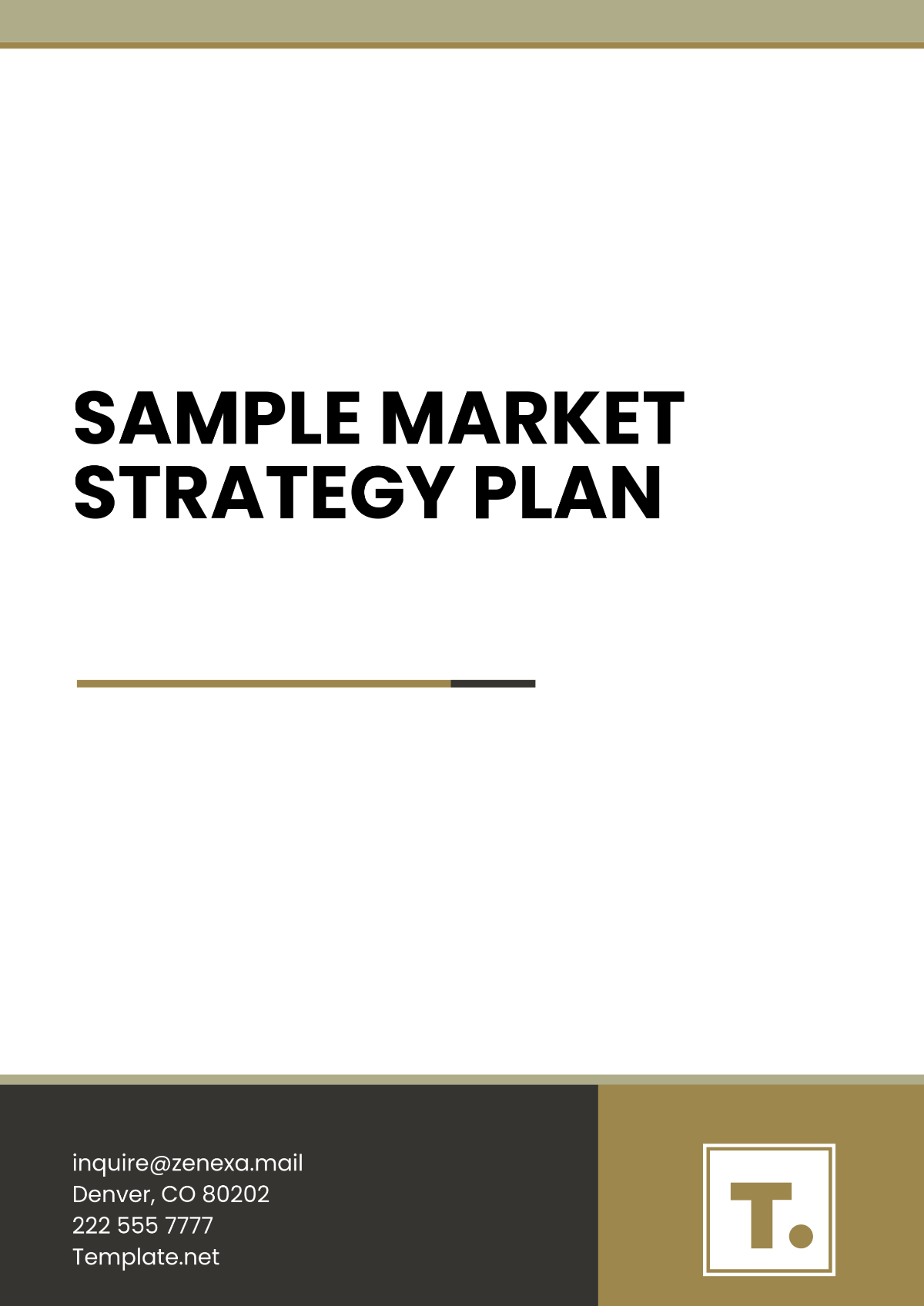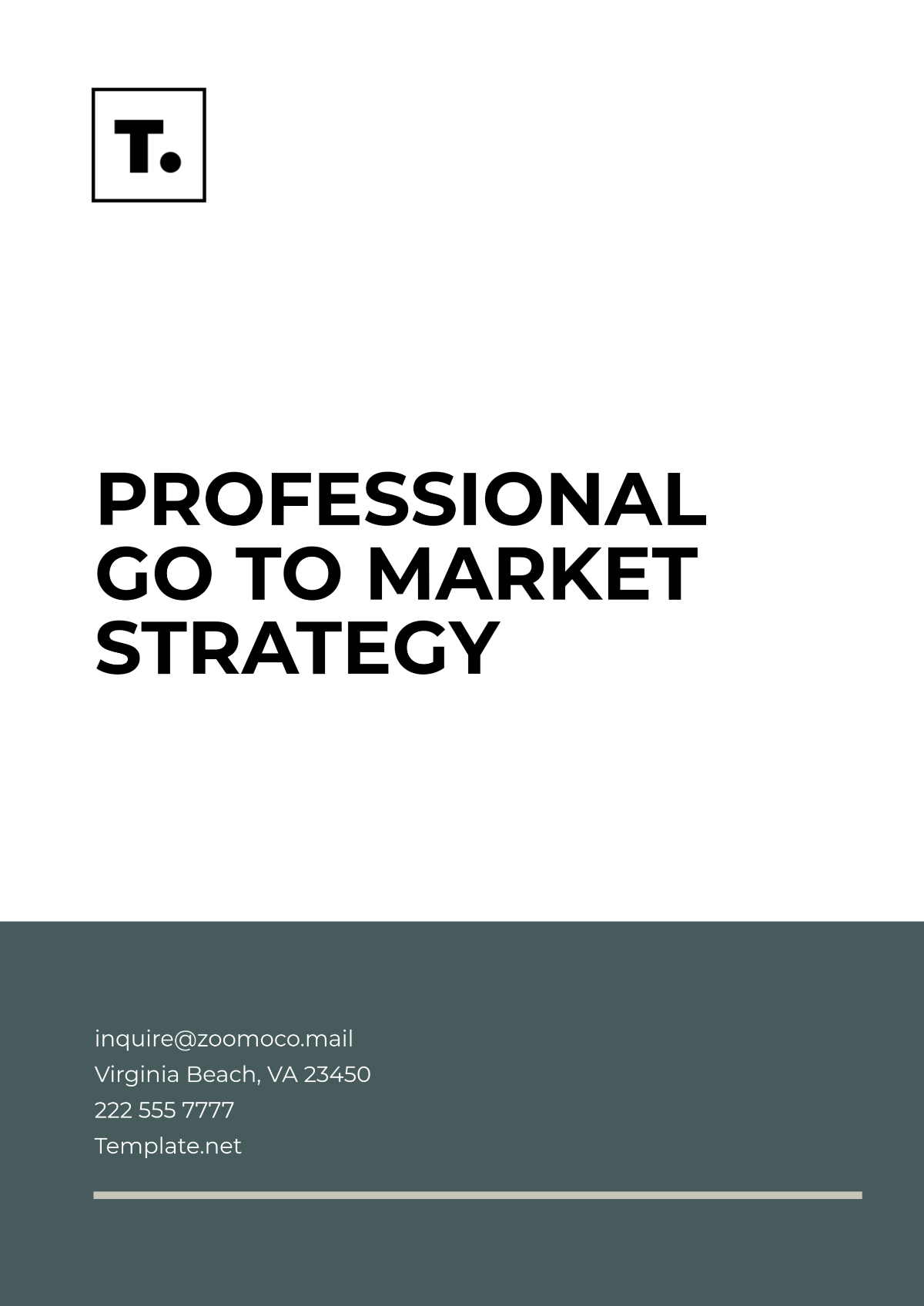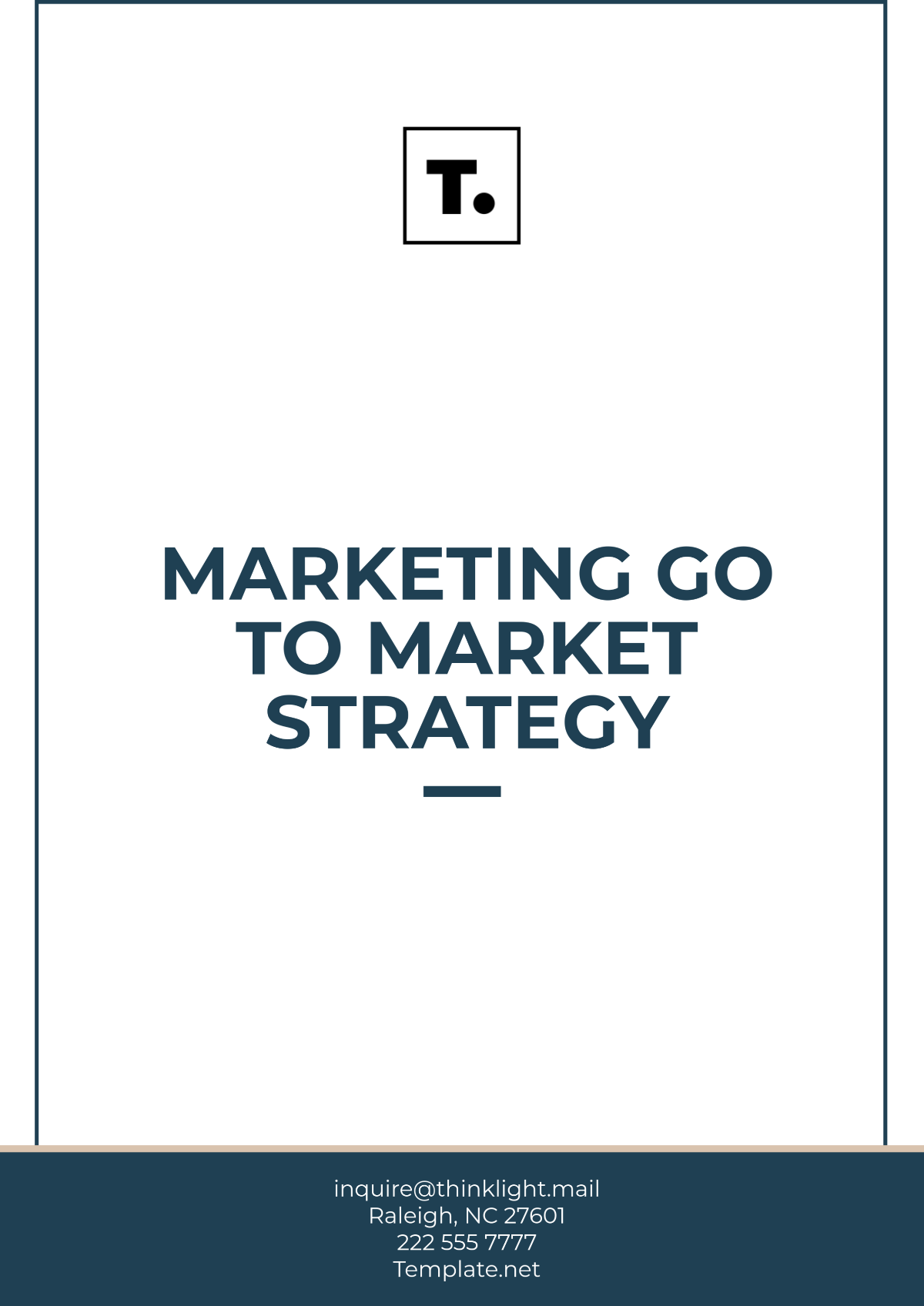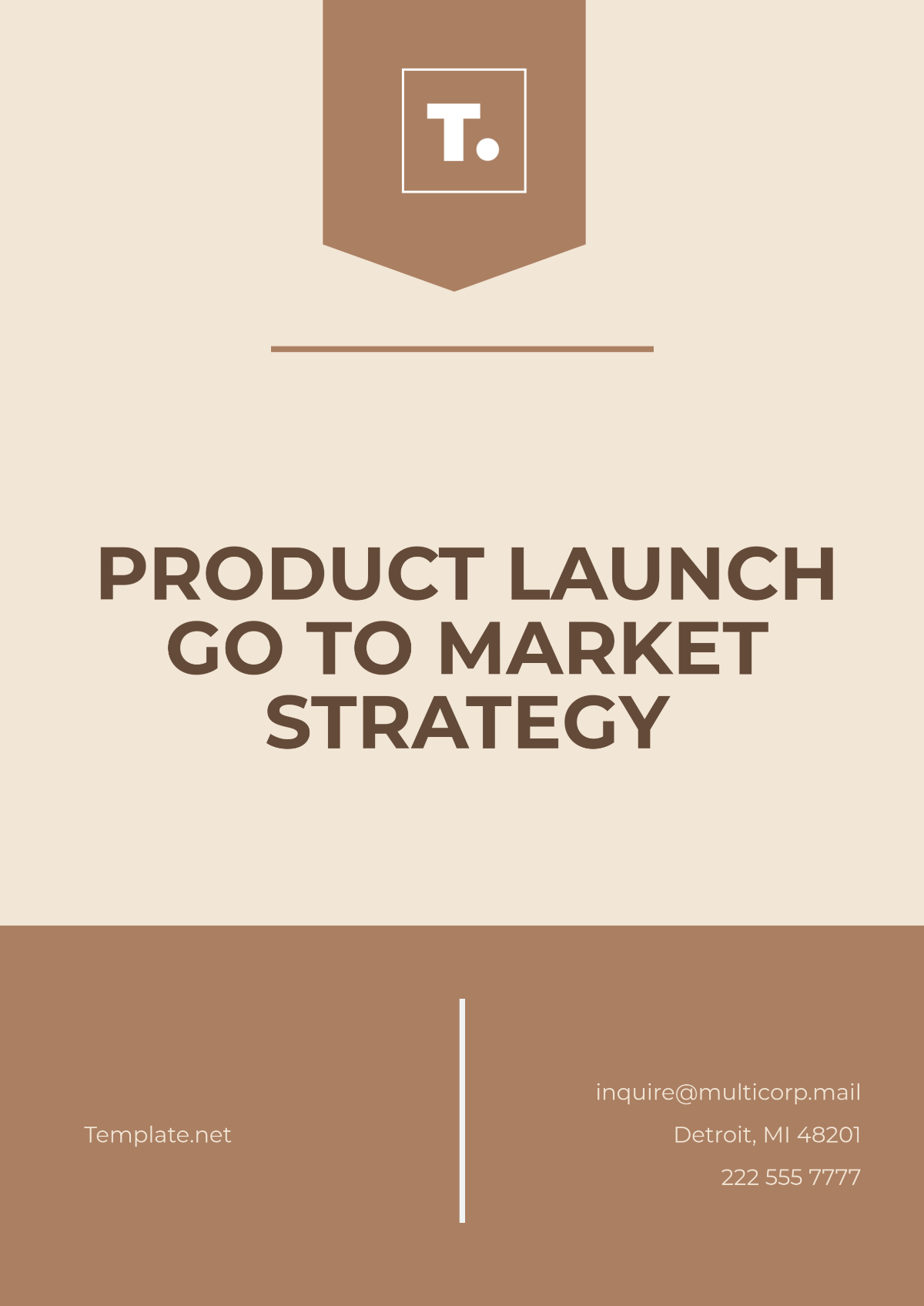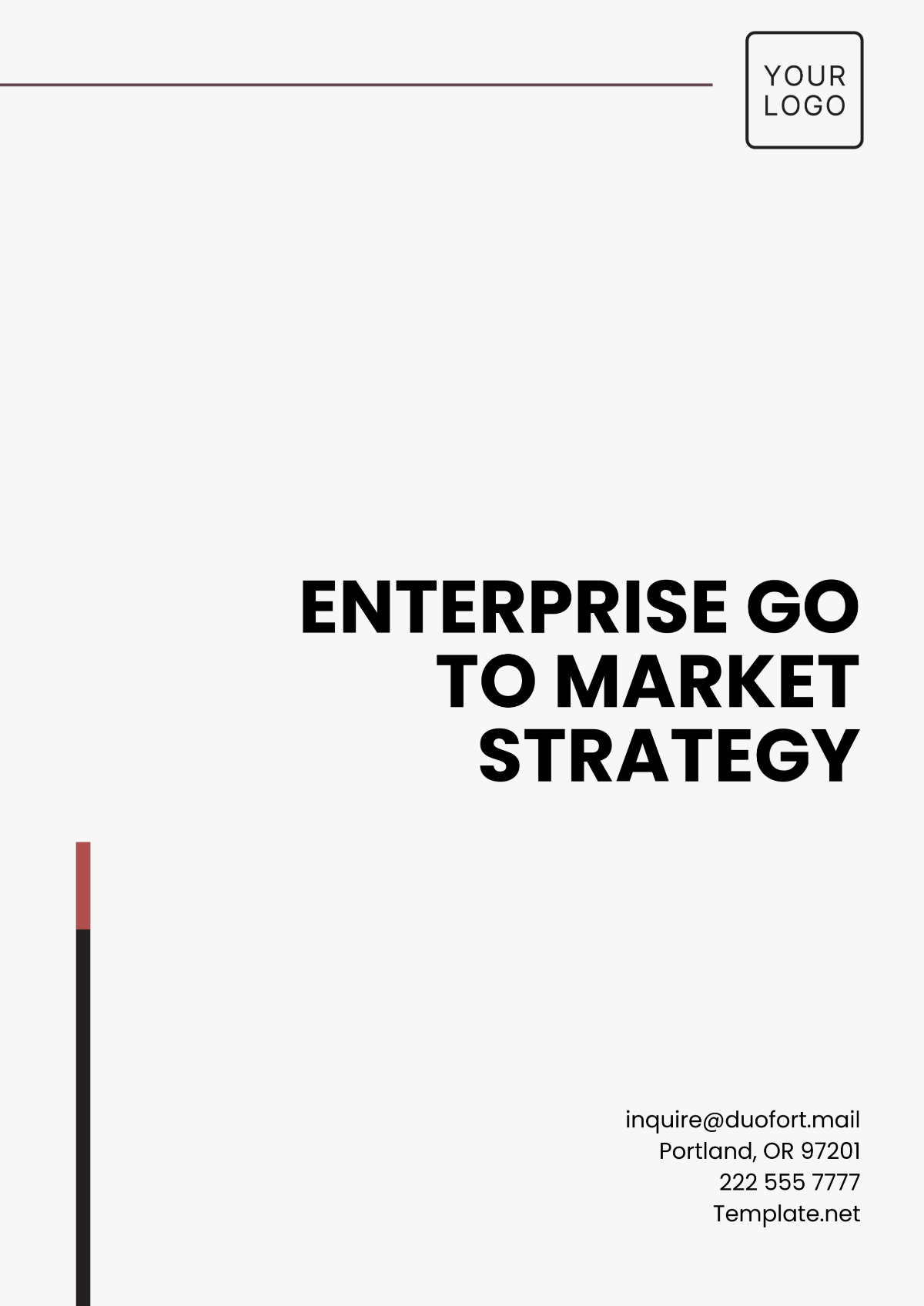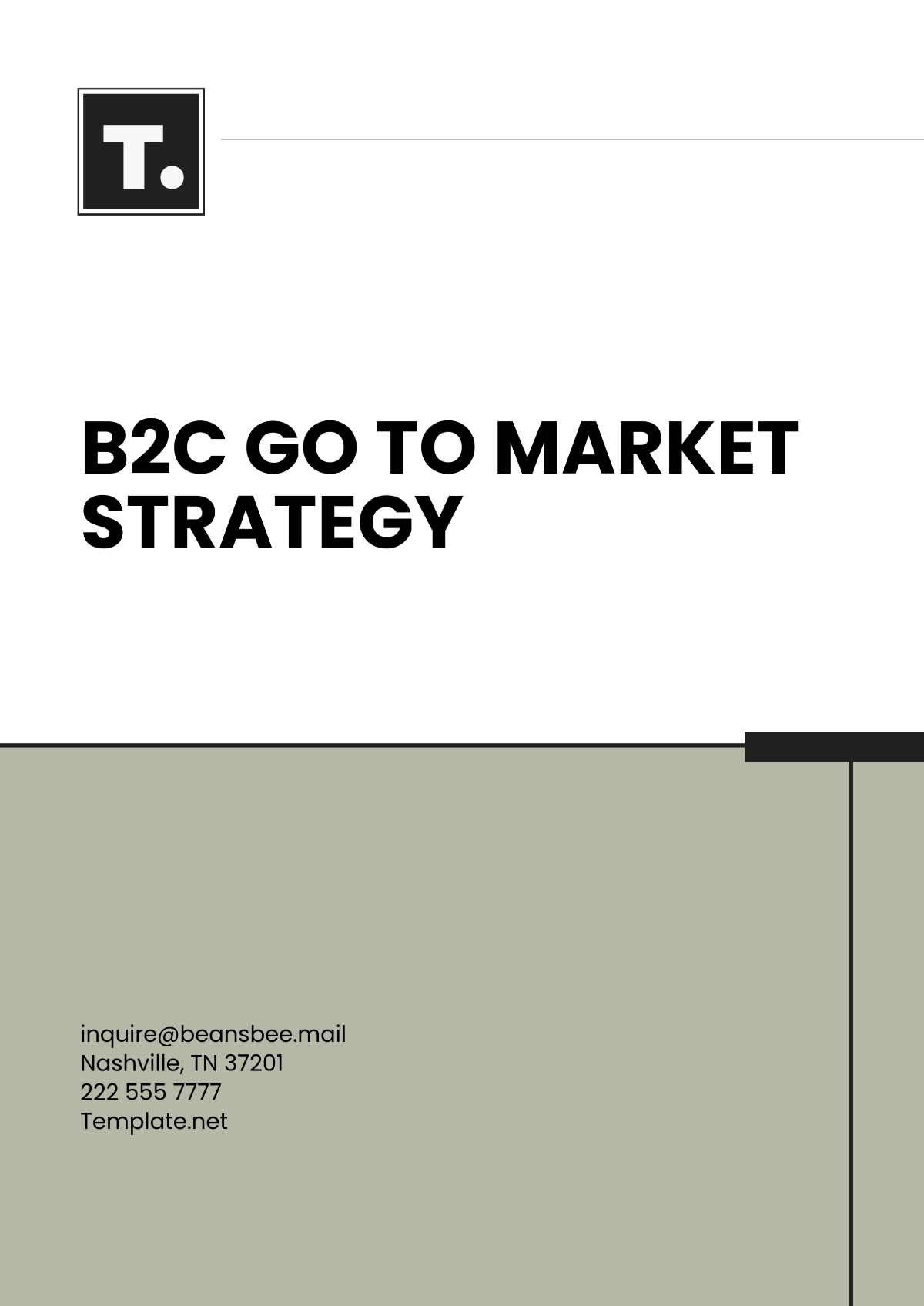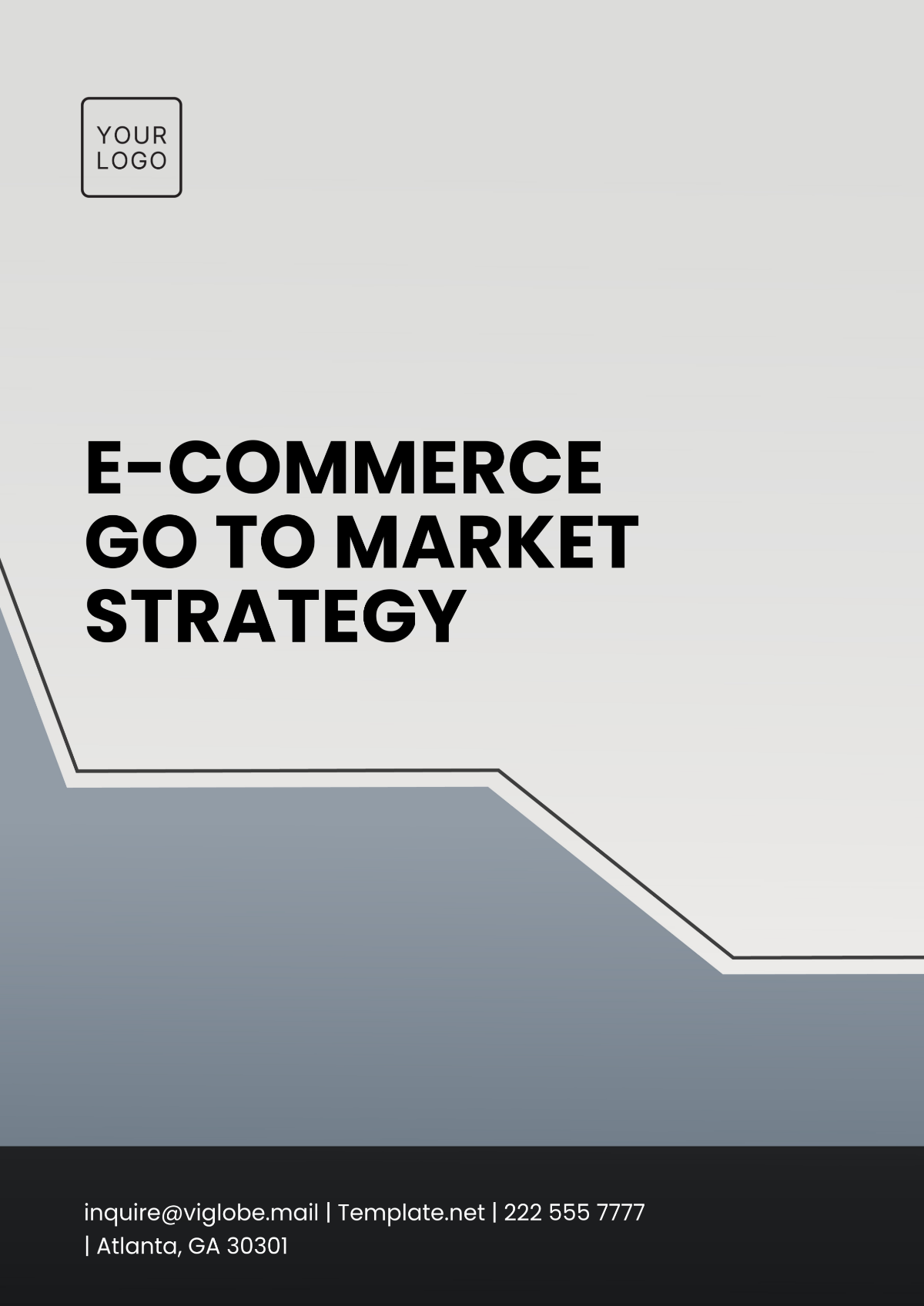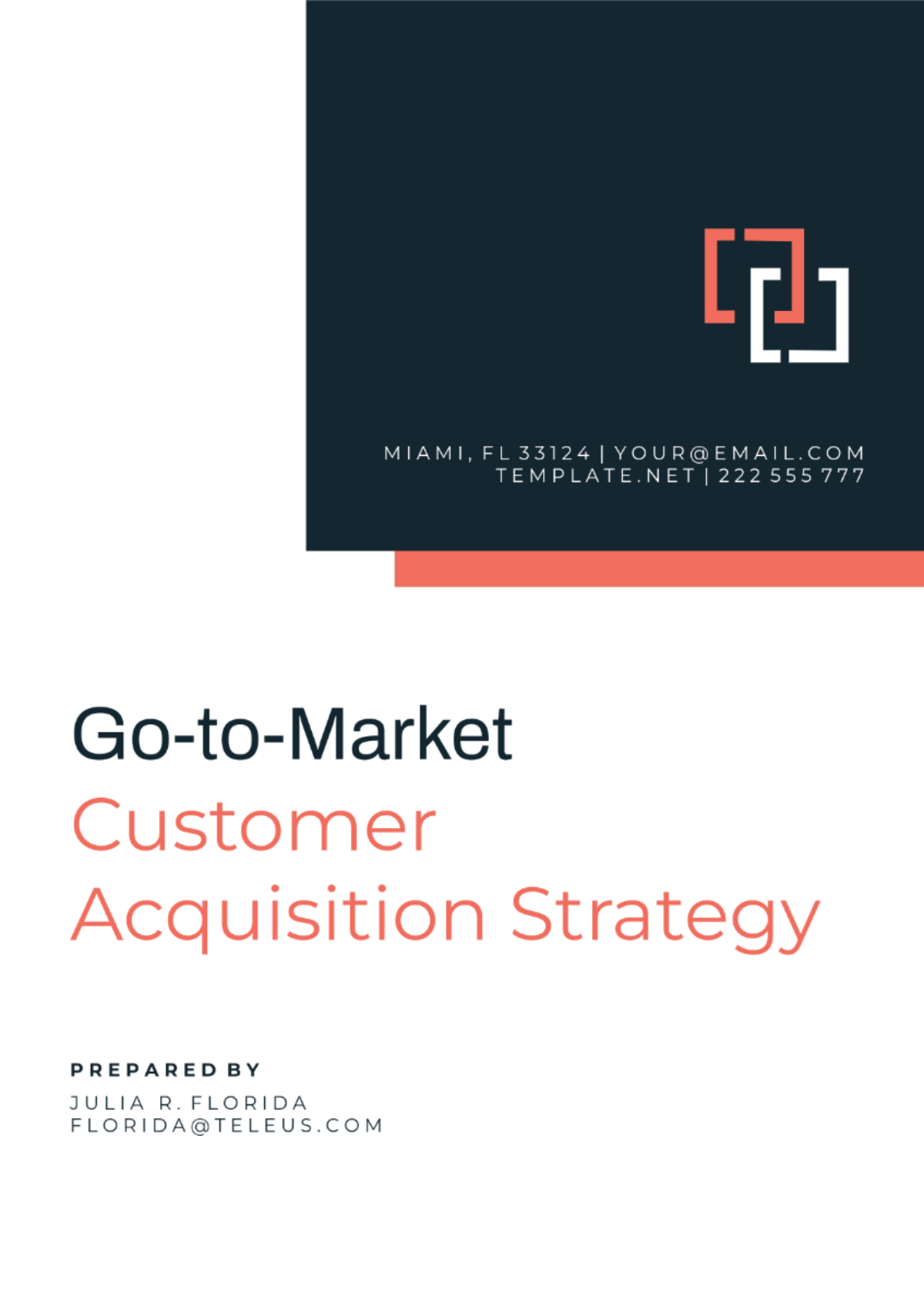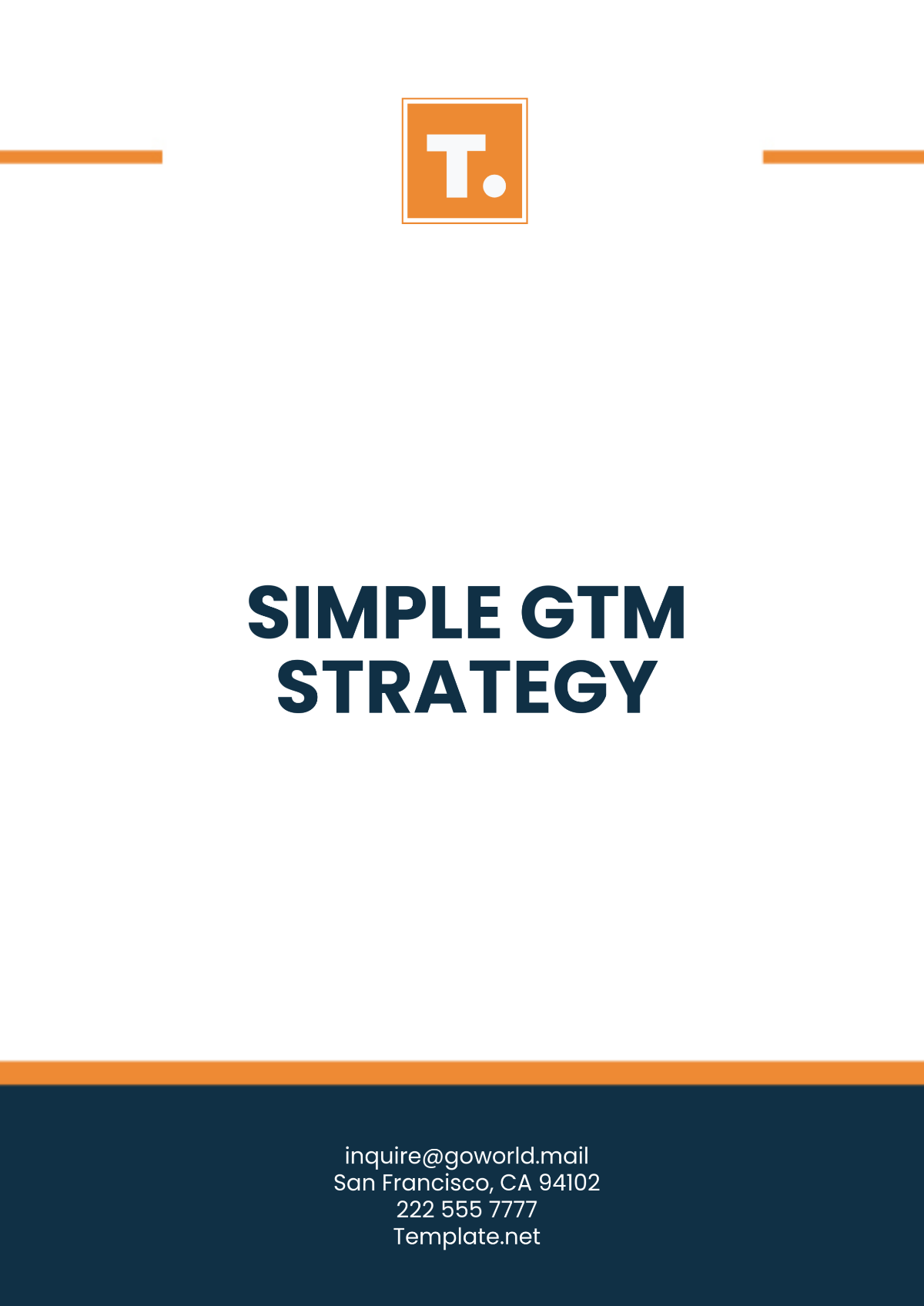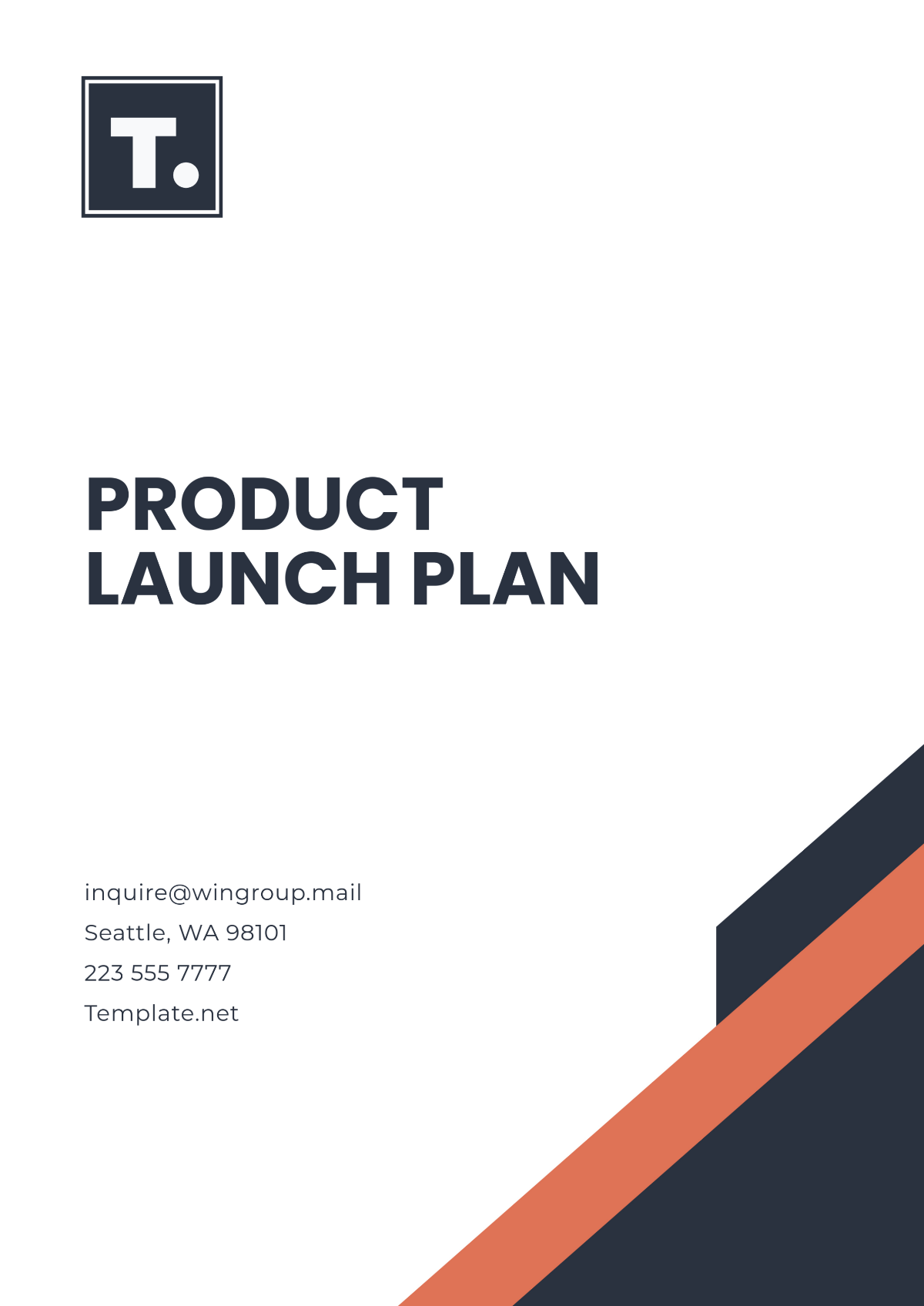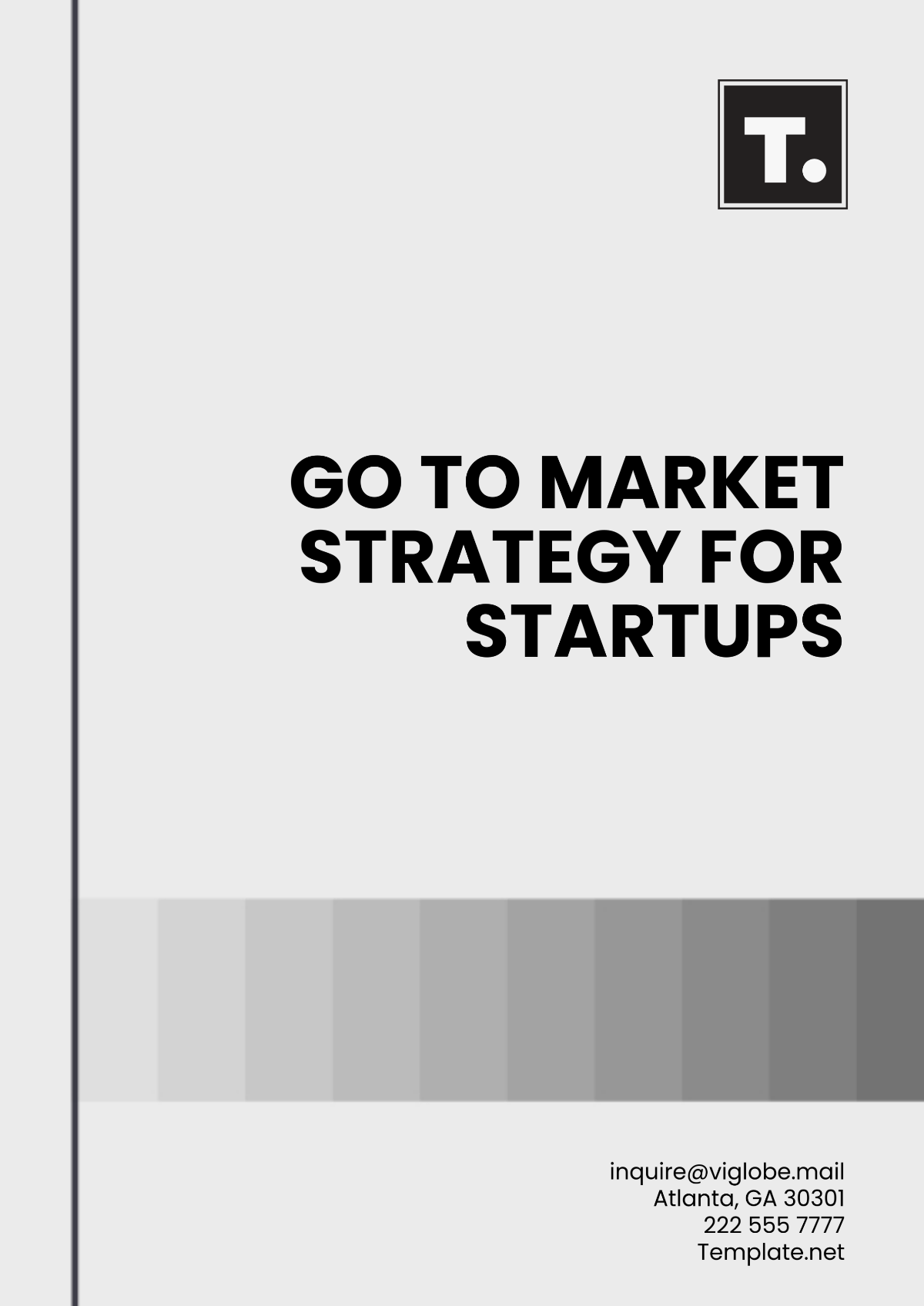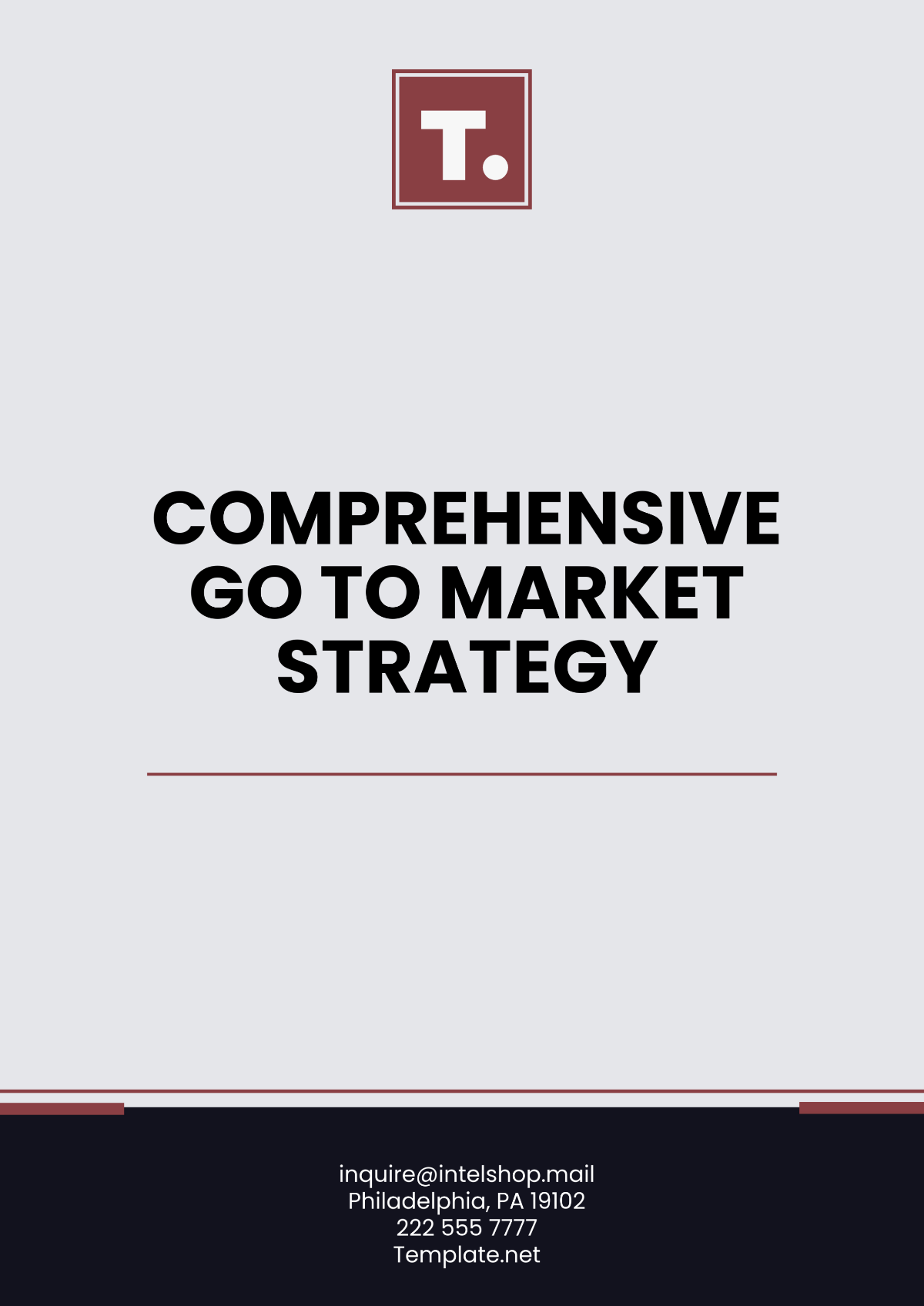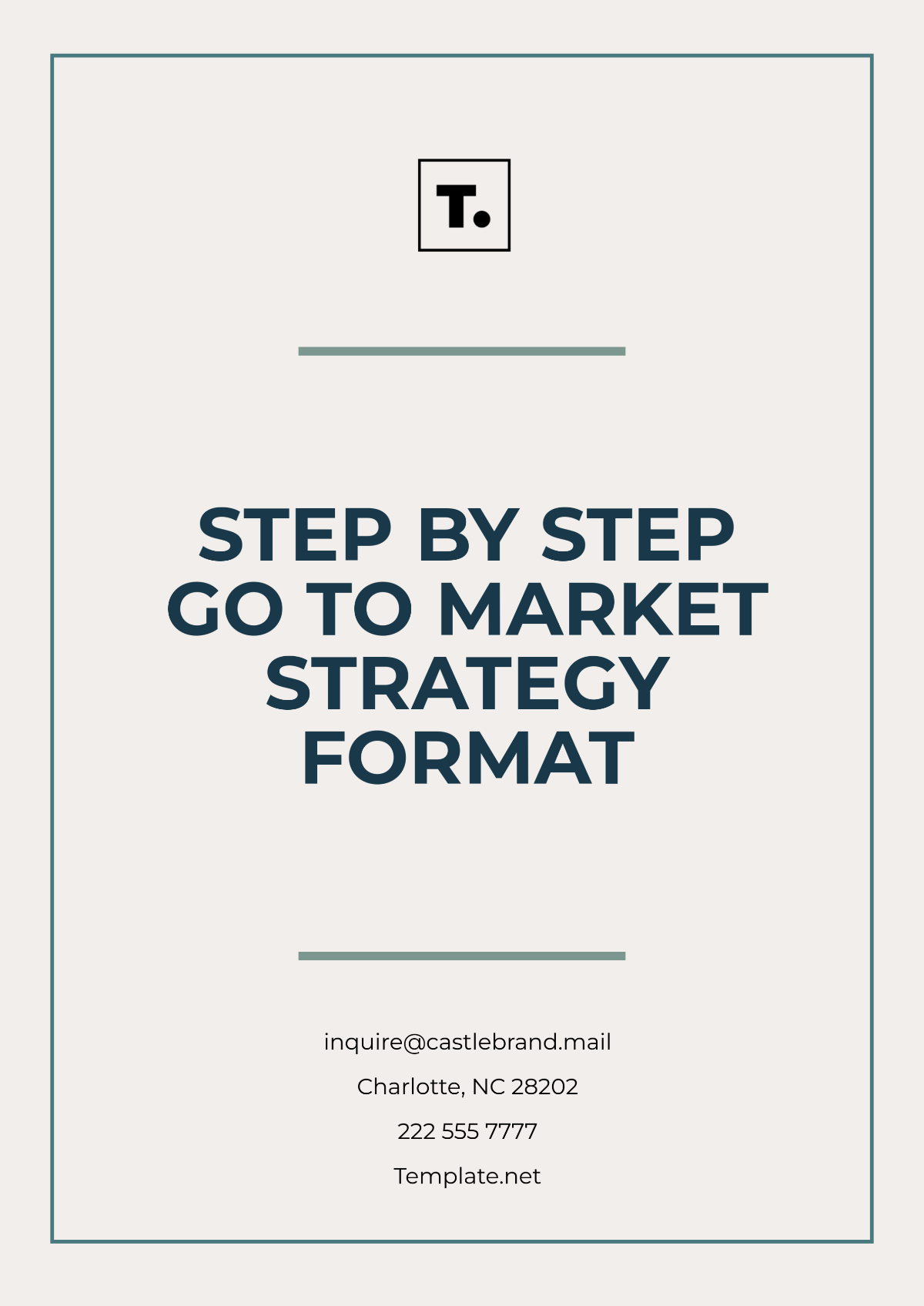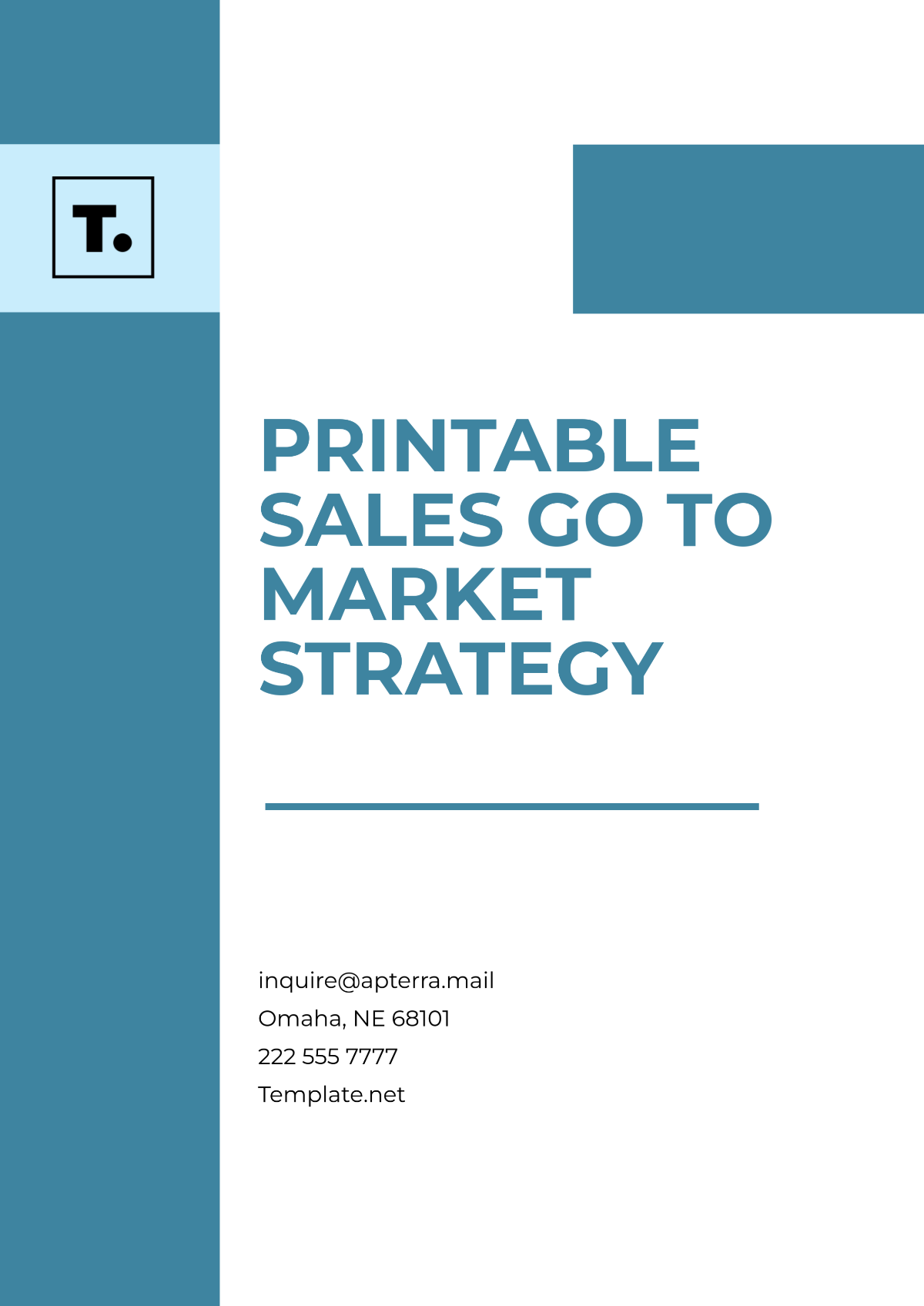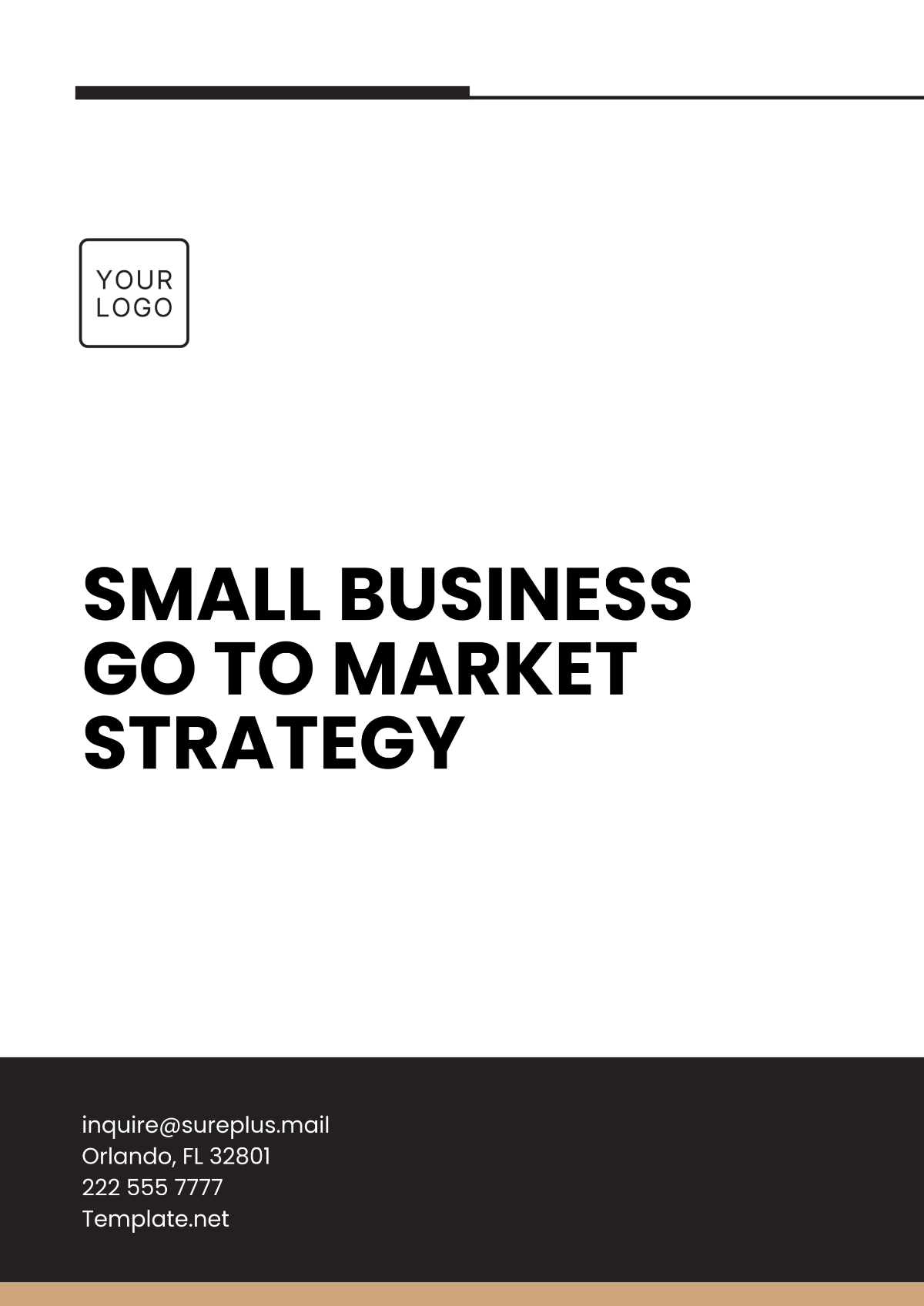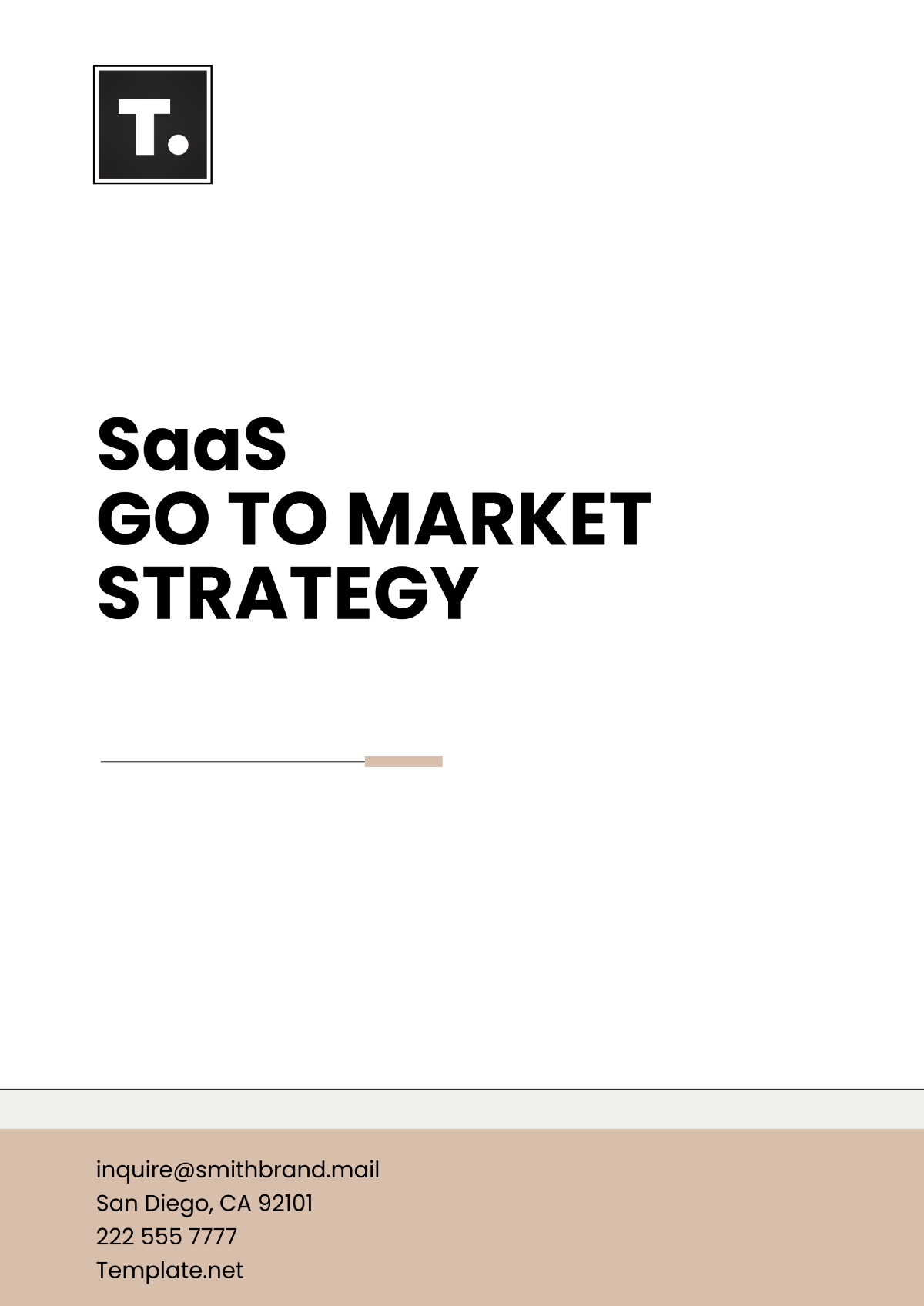Go-to-Market Customer Acquisition Strategy
I. Executive Summary
A. Overview of the Product/Service
[Your Company Name] is an innovative, eco-friendly cleaning solution designed to tackle tough stains and dirt while prioritizing user safety and environmental sustainability. Formulated from natural ingredients, it effectively cleans a variety of surfaces, offering consumers a guilt-free alternative to conventional chemical-based cleaners. With [Your Company Name], we aim to redefine cleanliness by harmonizing efficacy and environmental responsibility.
B. Purpose of the Strategy
This Go-to-Market strategy aims to provide a roadmap for the successful launch and growth of [Your Company Name] in a competitive market. By clearly defining our target audience, marketing strategies, and sales channels, we will optimize customer acquisition and establish a strong brand presence. The ultimate goal is to ensure [Your Company Name] becomes the preferred choice for eco-conscious consumers.
C. Key Objectives and Goals
Sales Target: Achieve $[00] in sales within the first year of launch.
Customer Base: Build a loyal customer base of at least 10,000 individuals within 12 months.
Retail Partnerships: Establish partnerships with 50 eco-friendly retail outlets by year-end to enhance visibility and accessibility.
II. Market Analysis
A. Industry Overview
Current Trends
The market for eco-friendly cleaning products is gaining momentum as consumers prioritize sustainability and health. Increased awareness of harmful chemicals in traditional cleaners is pushing brands to innovate and offer greener alternatives. Our focus on environmental responsibility aligns with the evolving consumer sentiment towards healthier living.
Market Size and Growth Potential
The global green cleaning products market is projected to grow from $[00] billion in [Year] to $[00] billion by [Year], with a compound annual growth rate (CAGR) of approximately [00]%. This growth is fueled by rising disposable income, urbanization, and a shift towards environmentally friendly products among consumers.
B. Competitive Landscape
Key Competitors
Major competitors in the eco-cleaning segment include Method, Seventh Generation, and Mrs. Meyer's Clean Day. Each of these brands has carved out a significant market share through their unique product offerings and marketing strategies. A comparative analysis highlights their strengths and weaknesses, which we will leverage to position [Your Company Name] effectively.
SWOT Analysis
Strengths |
|
Weaknesses |
|
Opportunities |
|
Threats |
|
C. Target Market Identification
Demographics
Our primary target demographic includes individuals aged 25-45, particularly urban dwellers, young professionals, and families. This group is typically more educated and environmentally aware, making them more receptive to eco-friendly products.
Psychographics
Target customers prioritize sustainability, health, and wellness in their purchasing decisions. They are often involved in community initiatives and seek to minimize their environmental impact through informed consumer choices.
Customer Segmentation
Segment A: Millennials who are deeply concerned about environmental issues and make a conscious effort to choose and support sustainable brands, while also maintaining an active presence on various social media platforms.
Segment B: Families who prioritize safety over cost, and are in search of cleaning products that are both safe and effective for use around their children and pets.
III. Value Proposition
A. Unique Selling Points (USPs)
[Your Company Name] differentiates itself through its commitment to sustainability, using a biodegradable formula made from natural ingredients that effectively combat common household stains. The product not only cleans but also enhances indoor air quality, making it a safe choice for homes with children and pets.
B. Customer Pain Points and Solutions
Many consumers are concerned about the harmful chemicals found in traditional cleaning products, which can cause health issues and environmental harm. [Your Company Name] addresses these concerns by providing a powerful cleaning solution that is free from toxic ingredients, ensuring both safety and peace of mind for users.
C. Benefits of the Product/Service
Non-toxic and Biodegradable: This product/product/service/item is designed to ensure the safety and well-being of its users while also minimizing any negative impacts on the environment, thereby providing an eco-friendly and user-friendly experience.
High Cleaning Efficacy: Demonstrated to possess an effectiveness that is comparable to that of the leading cleaners that are based on chemical formulations.
Pleasant Scents: This product is enhanced with natural essential oils known for their ability to impart a refreshing and pleasant fragrance. Notably, this delightful aroma is achieved without the use of any synthetic additives, ensuring a more natural and pure sensory experience.
IV. Customer Acquisition Goals
A. Short-term Goals
Launch Timeline: Successfully launch [Your Company Name] by Q2 [Year], ensuring all marketing materials and sales channels are prepared.
Initial Customer Acquisition: Aim to acquire 1,000 customers within the first three months of launch through targeted marketing efforts and promotional campaigns.
B. Long-term Goals
Retail Expansion: Establish brand presence in 5 major retail chains within the first year, increasing visibility and accessibility to consumers.
Customer Retention: Achieve a customer retention rate of [00]% within two years by fostering strong relationships through loyalty programs and excellent customer service.
C. Key Performance Indicators (KPIs)
KPI | Target |
|---|---|
Customer Acquisition Cost (CAC) | $[00] or lower |
Conversion Rate | [00]% from marketing campaigns |
Customer Lifetime Value (CLV) | $[00] over 2 years |
V. Sales and Marketing Strategies
A. Marketing Channels
Digital Marketing
a. Social Media Marketing
Utilize platforms like Instagram and Facebook to run targeted ads showcasing [Your Company Name]'s benefits and customer testimonials, creating engaging content that resonates with eco-conscious consumers.
b. Email Marketing
Launch an email campaign offering exclusive discounts for first-time buyers, and share eco-friendly tips and product updates to engage subscribers.
c. Content Marketing
Develop a blog featuring articles on sustainable living, effective cleaning tips, and product usage guides to drive organic traffic and build authority in the eco-friendly niche.
d. SEO and SEM
Optimize the website for relevant keywords and run Google Ads campaigns targeting users searching for eco-friendly cleaning solutions.
Traditional Marketing
a. Print Advertising
Advertise in eco-conscious magazines and local newspapers to reach target customers who value print media as part of their information consumption.
b. Events and Trade Shows
Participate in eco-friendly product expos and community events to showcase [Your Company Name], offering samples and promotional materials to engage potential customers.
B. Sales Channels
Direct Sales
Sell directly through our e-commerce website, offering bundled products at discounted rates to encourage higher purchase volumes.
Partnerships and Alliances
Collaborate with eco-friendly retailers, cleaning services, and subscription boxes that align with our brand values to enhance distribution and customer reach.
E-commerce Platforms
List [Your Company Name]n on Amazon and other online marketplaces, utilizing their vast customer base to increase product visibility and sales.
C. Pricing Strategy
Competitive Analysis
Conduct thorough analysis of competitors’ pricing structures to ensure [Your Company Name] is competitively priced while maintaining perceived value and brand integrity.
Pricing Models
Offer a tiered pricing model, including one-time purchases, multi-pack discounts, and subscription options for regular customers to drive repeat business.
VI. Customer Journey Mapping
A. Awareness Stage
In the awareness stage, potential customers become familiar with [Your Company Name] through targeted digital advertising, social media content, and influencer partnerships. Engaging and educational content, such as infographics and blog posts about the benefits of eco-friendly cleaning, will be shared across various platforms to drive initial interest. Our goal is to generate organic discussions and shares among target audiences, amplifying reach through word-of-mouth.
B. Consideration Stage
During the consideration stage, interested customers will explore [Your Company Name]’s website, read product descriptions, and view testimonials and reviews from satisfied users. To facilitate informed decision-making, we will implement comparison charts highlighting [Your Company Name]'s advantages over traditional cleaners and provide educational resources, such as how-to videos and blog articles. Engaging with customers via live chat support will also help address any queries promptly, enhancing their confidence in choosing our product.
C. Decision Stage
In the decision stage, customers are ready to make a purchase. We will streamline the checkout process on our website, offering multiple payment options to enhance convenience. Promotions, such as limited-time discounts or free shipping on first orders, will encourage quick conversions and reduce cart abandonment rates. A well-designed landing page with clear calls to action will guide customers toward completing their purchases.
D. Post-Purchase Stage
After the purchase, customers enter the post-purchase stage, where we focus on nurturing relationships and fostering loyalty. We will send personalized follow-up emails thanking customers for their purchase, including tips on using [Your Company Name] effectively. Regular surveys will gather feedback to refine our offerings, and we will introduce loyalty programs to incentivize repeat purchases and referrals, enhancing customer retention.
VII. Implementation Plan
A. Timeline
A detailed timeline will be established to guide the launch and subsequent phases of our marketing strategy. Key milestones include:
Milestone | Date |
|---|---|
Product Development Completion | [Date] |
Marketing Campaign Launch | [Date] |
Product Launch | [Date] |
Review of Initial Performance | [Date] |
Expansion into Retail Partnerships | [Date] |
B. Resource Allocation
Resources will be allocated across key departments to ensure effective execution. A dedicated budget for marketing, production, and operational costs will be defined, with clear percentages allocated to each area to maximize impact. For example, we will allocate [00]% of the budget to marketing efforts, [00]% to production costs, and [00]% for operational expenses.
C. Roles and Responsibilities
Clearly defined roles and responsibilities will streamline the implementation process.
Role | Responsibilities |
|---|---|
Marketing Manager | Oversees marketing strategy and execution |
Sales Manager | Manages sales strategy and partnerships |
Product Manager | Coordinates product development and launch |
Customer Service Lead | Handles customer inquiries and feedback |
Data Analyst | Monitors performance metrics and KPIs |
VIII. Budget
A. Marketing Budget
The marketing budget will be strategically allocated to maximize ROI, focusing on high-impact channels.
Category | Budget Allocation |
|---|---|
Digital Advertising | $[00] |
Content Creation | $[00] |
Social Media Campaigns | $[00] |
Traditional Advertising | $[00] |
Promotions and Discounts | $[00] |
Total | $[00] |
B. Sales Budget
The sales budget will facilitate effective customer acquisition and support growth.
Category | Budget Allocation |
|---|---|
Direct Sales Initiatives | $[00] |
Partnership Development | $[00] |
Training and Development | $[00] |
Total | $[00] |
C. Overall Financial Projections
Financial projections will help gauge the viability of [Your Company Name]'s market entry.
Metric | Year 1 Projection |
|---|---|
Total Revenue | $[00] |
Total Expenses | $[00] |
Net Profit | $[00] |
IX. Monitoring and Evaluation
A. Performance Metrics
Key performance metrics will be tracked to assess the success of the strategy.
Metric | Target Measurement |
|---|---|
Customer Acquisition Cost (CAC) | $[00] or lower |
Conversion Rate | [00]% from marketing campaigns |
Customer Lifetime Value (CLV) | $[00] over 2 years |
Monthly Website Traffic | [00] visitors |
B. Regular Review Process
A regular review process will be established to assess performance against set KPIs. Monthly performance meetings will be scheduled to analyze data, discuss challenges, and identify opportunities for optimization. Adjustments to strategies will be made based on findings to ensure continued alignment with goals.
C. Adjustments Based on Feedback and Data
Customer feedback will be actively sought through surveys and reviews to guide product and strategy adjustments. Data analytics will be utilized to analyze sales trends and customer behavior, enabling timely responses to market demands and consumer preferences. This continuous improvement approach will enhance our competitiveness and customer satisfaction.
X. Conclusion
A. Summary of Key Points
This Go-to-Market strategy for [Your Company Name] outlines a structured approach to effectively launch and grow the brand in the eco-friendly cleaning product market. By focusing on a well-defined target audience, leveraging strategic marketing channels, and prioritizing customer engagement, we are poised to achieve significant market penetration and brand loyalty.
B. Call to Action
It’s crucial that all team members align their efforts with this strategy to ensure a successful launch and sustainable growth. Let’s collaborate effectively, leverage our strengths, and drive [Your Company Name] toward becoming a trusted name in eco-friendly cleaning solutions.


